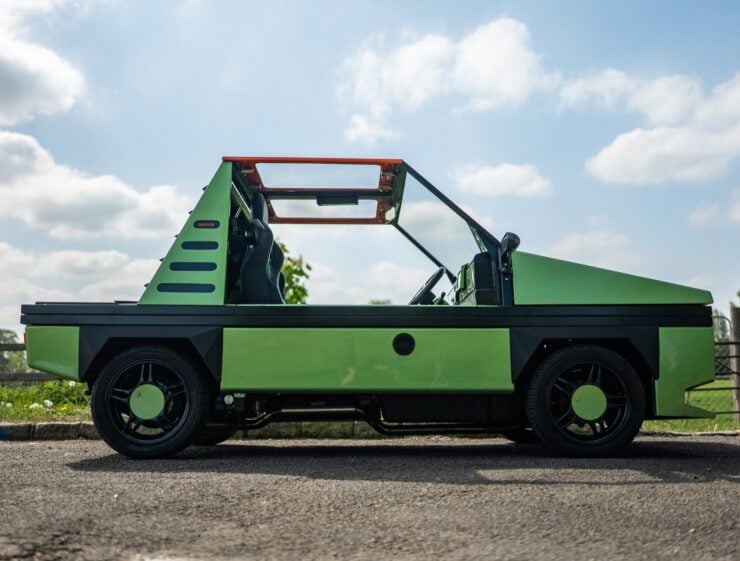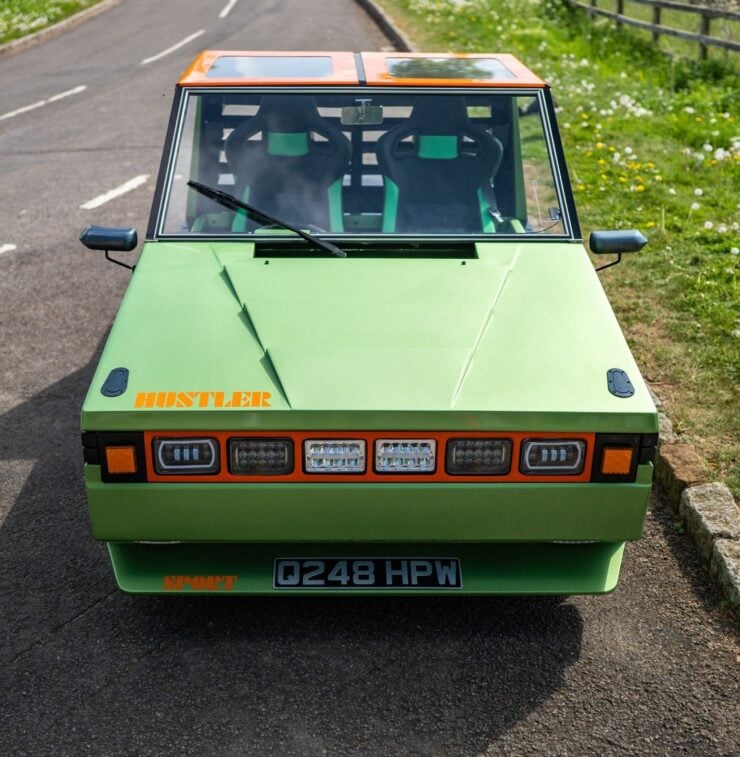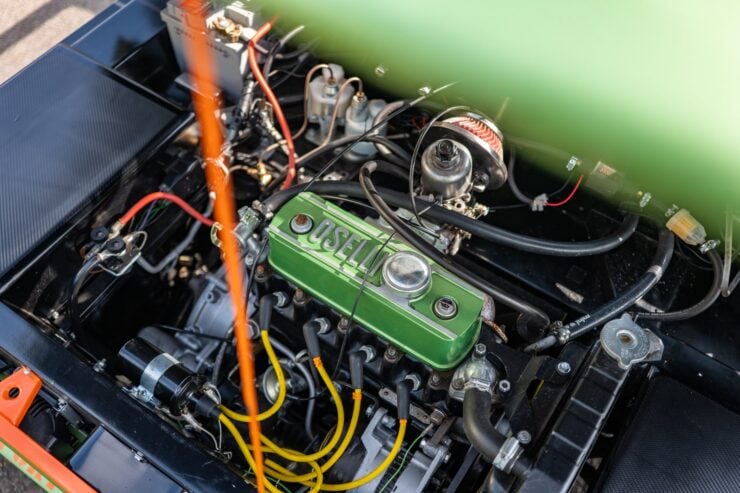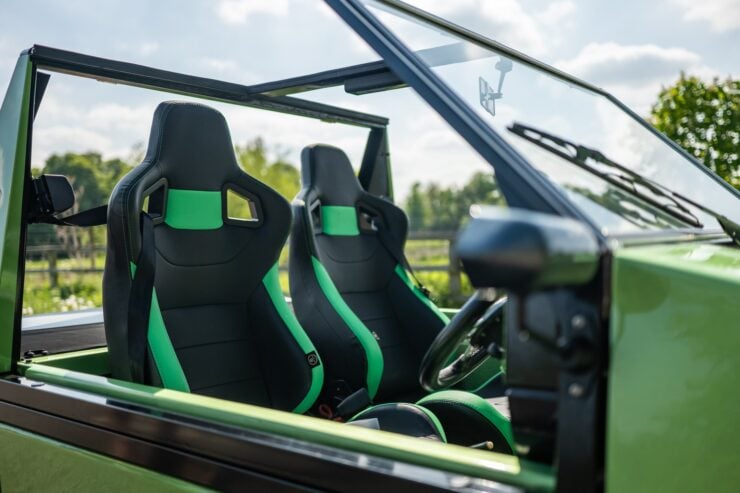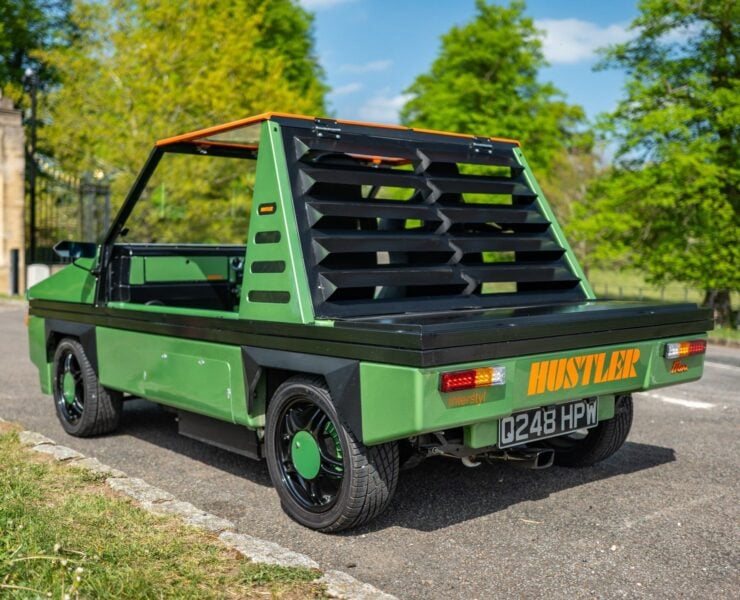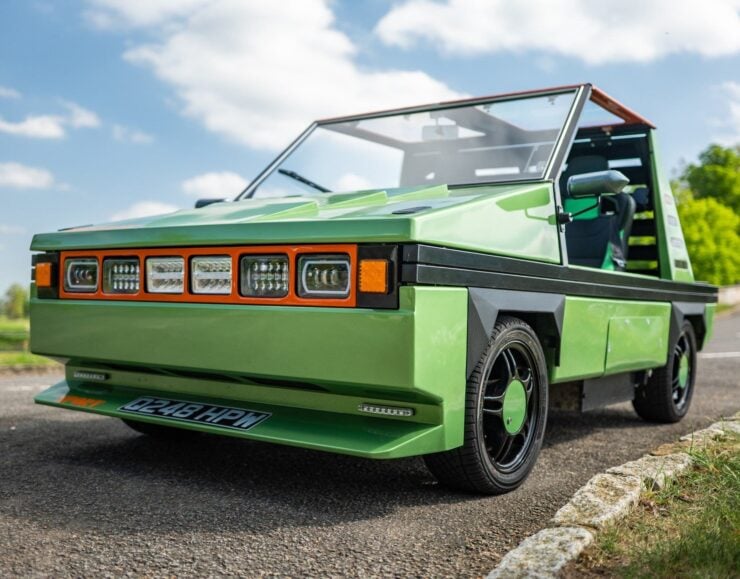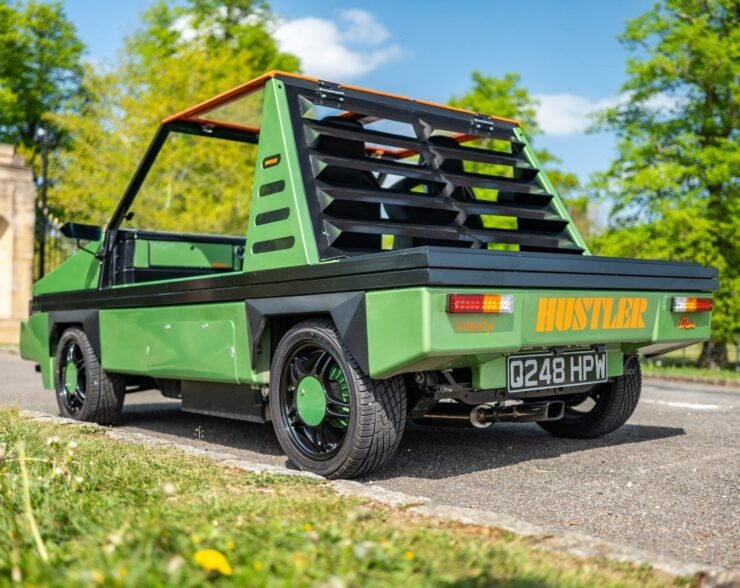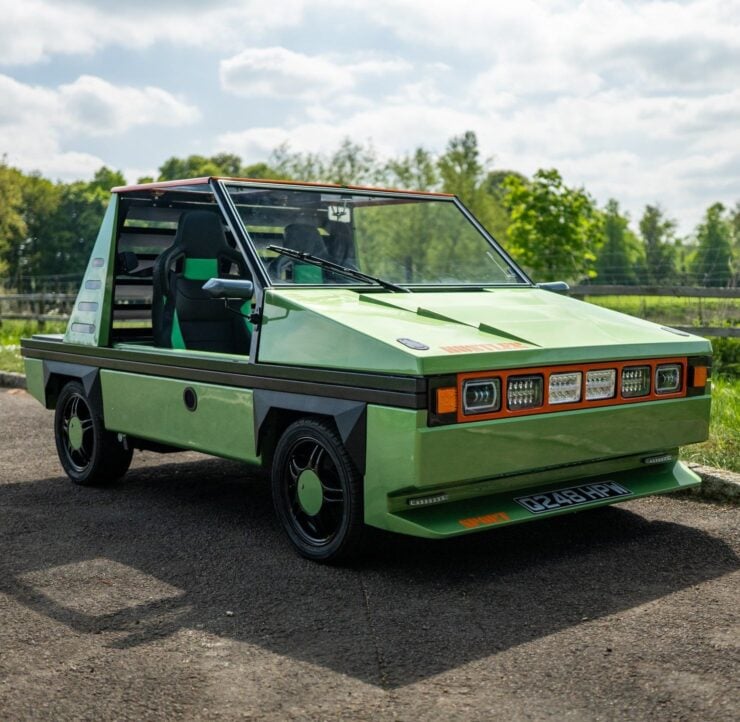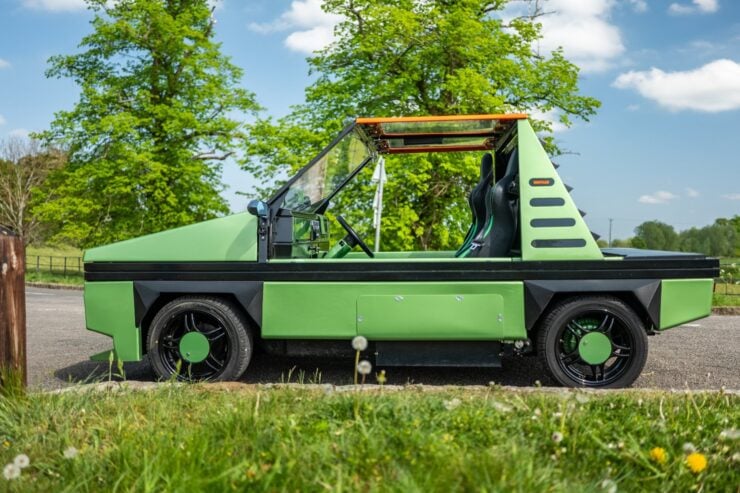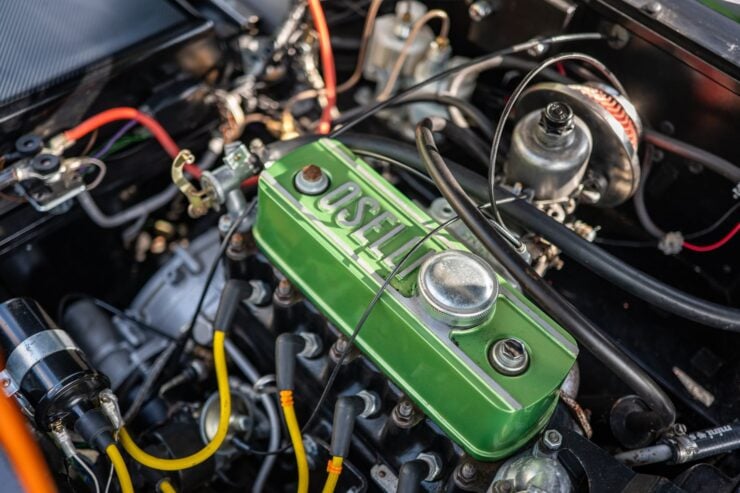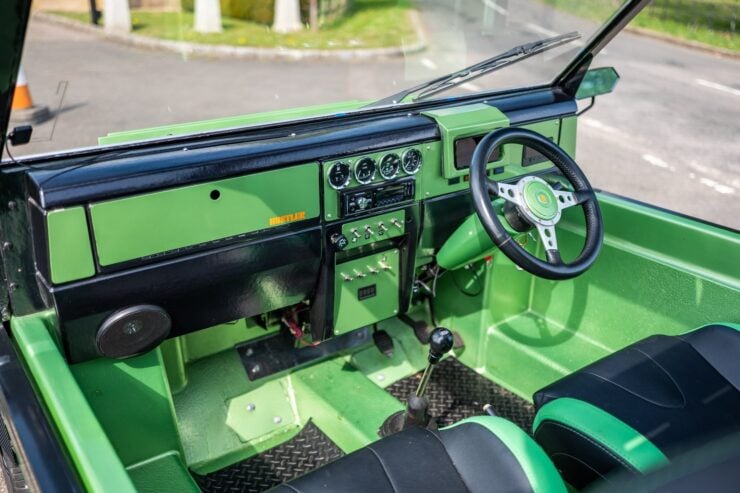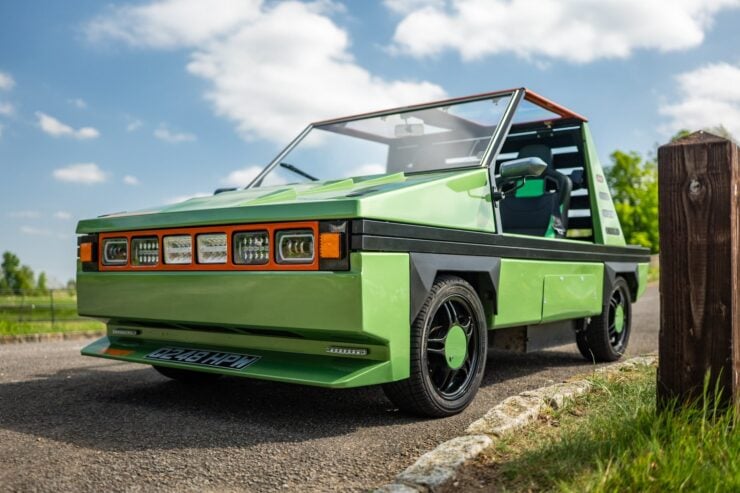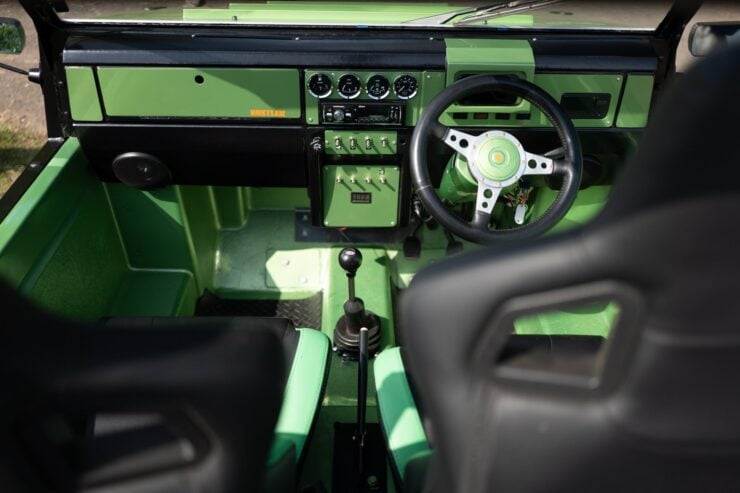This is a 1988 William Towns Hustler. It’s a car you might never have seen before but the man who designed it, William Towns, is a bit of a legend in automotive design circles due to his work styling a series of influential Aston Martins.
The Hustler was developed as an extremely simple car that used Mini mechanicals and all flat body panels and glass. Hundreds were built, and many have survived to the current day thanks to a thriving collector and enthusiast community.
Fast Facts: The William Towns Hustler
- William Towns, famed for designing the Aston Martin DBS, Lagonda, and Bulldog, later founded his own design firm Interstyl and focused on minimalist, wedge-shaped designs. The Hustler, launched in 1978, embodied this vision – offering modular, affordable, and kit-based utility cars that could be assembled at home using Mini components and basic tools.
- The Hustler’s design was rectilinear and modular, with flat glass and simple panels in materials like fiberglass, steel, and plywood. It spawned over 70 variants, including utility vans, pickups, six-wheelers (using twin Mini rear subframes), amphibious models, and striking outliers like the skeletal, open-wheel Hellcat and the rugged Highlander with lifted suspension.
- All Hustlers used BMC Mini mechanicals – engine, suspension, steering, and brakes – making parts easy to source and simplifying construction for home mechanics. Interiors were spartan, but the vehicles were adaptable for various uses, from rural transport to promotional displays. The emphasis was on practicality, visibility, and low-cost motoring.
- The featured 1988 Hustler, built by Cranfield engineering students and restored by a former Aston Martin apprentice, boasts a tuned Oselli 1,100cc engine, performance brakes, and a lightweight chassis. Though the Hustler was never mass-produced, it remains a unique example of Towns’ vision for low-cost, modular transportation and independent automotive innovation.
Who Was William Towns?
William Towns had made a name for himself designing the Aston Martin DBS, Aston Martin Lagonda, and Aston Martin Bulldog, but he designed a number of other notable cars for other makes, including the Reliant Scimitar Sabre, Minissima, and the Rover-BRM gas turbine Le Mans race car.
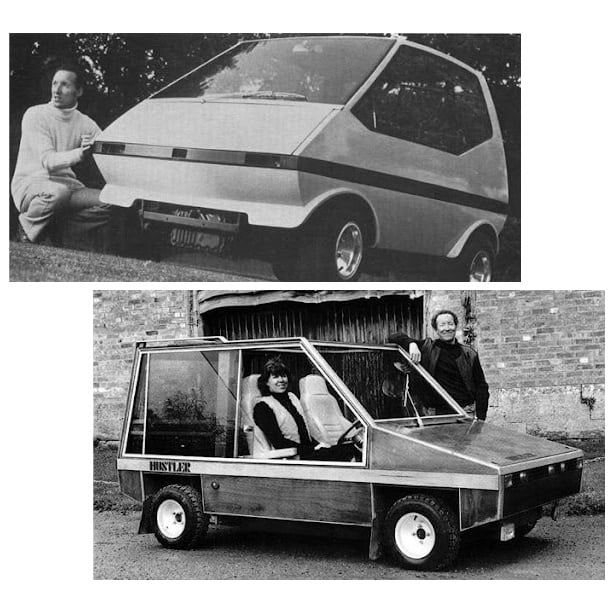

Later in his career, Towns established his own design studio, Interstyl, and dedicated himself to designing a series of avant garde cars like the Hustler, Microdot, TXC Tracer, and his earlier design, the Minissima. All of these cars were characterized by their wedge-shaped styling but the one that took up the most of Towns’ time was the Hustler, which was released across a whole series of different versions.
The William Towns Hustler
The William Towns Hustler was an angular British microcar developed by celebrated automotive (and industrial) designer William Towns in the 1970s and early 1980s. Unlike his earlier work for Aston Martin, including the futuristic Lagonda sedan, the Hustler was developed with utility, minimalism, and perhaps most importantly, affordability in mind.
It was designed to be cheap, easy to build at home with hand tools, and adaptable to a variety of use cases. Towns’ vision with the Hustler was one of simple modularity and function over form, and its sharp angular aesthetic would make it instantly recognizable.
Towns launched the original Hustler in 1978 from his own design firm, Interstyl. The car was sold in kit form, which allowed buyers to assemble the vehicle themselves, usually using parts sourced from the British Motor Corporation (BMC) Mini.
The design incorporated a basic welded steel square-tube chassis, with flat glass windows and body panels made from either fiberglass, wood, marine plywood, or steel depending on the specific variant.
This use of flat panels and right angles gave the vehicle its now-iconic “rectilinear” appearance, evoking Towns’ other sharp-edged designs like the Aston Martin Lagonda and the Bulldog concept car.
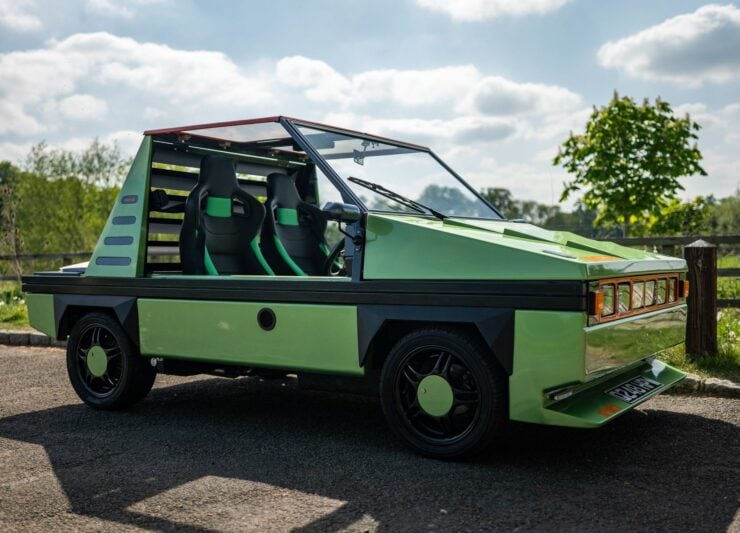


The (Many) Hustler Variants
The Hustler had been developed with a flexible design, and over the course of its development at least 72 different variants were produced, covering everything from simple utility vans and pickups to six-wheelers and even amphibious versions. The six-wheeled “Hustler 6” was particularly unusual, making use of two Mini rear subframes to provide dual rear suspension and braking assemblies.
Most Hustlers used Mini mechanicals, including the transversely-mounted inline-four A-series engine and gearbox up front, as well as the subframe assemblies. This kept costs low and parts were readily available in the UK. The Mini drivetrain also meant that the Hustler was relatively light, fuel efficient, and simple to maintain.
Brakes, suspension, and steering components were also taken from the Mini, making the build process relatively straightforward for an enthusiastic home mechanic.
Perhaps the most memorable version of the car was the Hustler Hellcat which was introduced in 1981. It had a more radical, open-wheel layout with minimal bodywork and a somewhat skeletal appearance. It was built for fun and experimentation rather than practicality – in a way the Hellcat emphasized the degree to which the Hustler design could be modified without losing its essential character.
Another significant variant was the Hustler Highlander, a taller, more rugged version fitted with a canvas roof and lifted suspension. This version was aimed at those looking for a tough, utilitarian vehicle for rural or off-road use. Though not a four-wheel-drive, it certainly gave the impression of off-road capability, a little like the earlier Mini Moke, which it resembled in spirit (if not in form).
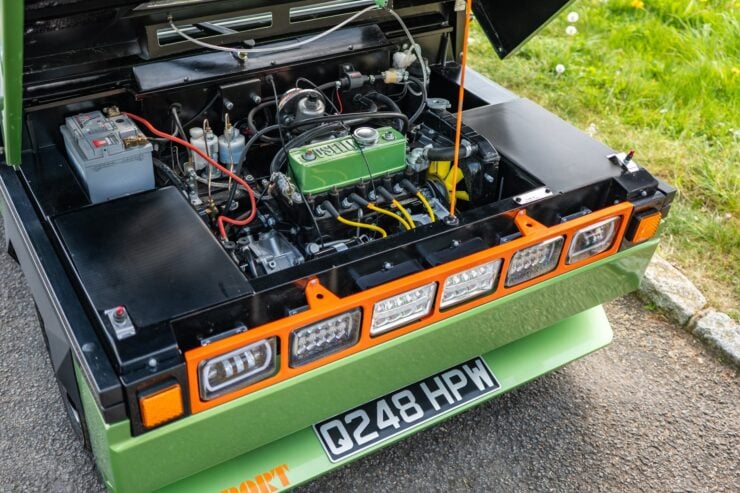


By offering the Hustler in kit form direct from Interstyl, Towns appealed directly to a market segment that had grown through the popularity of home-built sports cars like those from Lotus (and later Caterham). However, while most kit cars emphasized performance and/or styling, the Hustler had always prioritized its aforementioned original design ethos – utilitarianism, affordability, and ease of construction.
The interiors of Hustler cars were minimal by design – basic instrumentation, flat dashboards, and simple seating was typical. Many examples were adapted for specific purposes, including commercial use, transport for disabled drivers, and even as promotional vehicles in some rare cases.
The glasshouse-style upper body, created through the extensive use of flat glass windows, provided excellent visibility, and in warmer weather, many versions could be driven semi-open due to the modular door and roof systems.
The End Of The Road
Production of the Hustler continued into the mid-1980s, though volumes remained relatively low. Towns did not intend for the car to compete with mass-market production vehicles. Instead, he saw it as an exploration of a new form of affordable transport and design efficiency. In total, hundreds of kits are believed to have been sold, with an unknown number completed and road registered.
Some were built to a high standard, others not so much, while there were some that remained incomplete or only partially constructed – as was common with kit cars of the era. And perhaps from any era.
The 1988 William Towns Hustler Shown Here
The car you see here is a 1988 William Towns Hustler that was built by former Aston Martin employee to a high standard, certainly higher than most. The powder-coated chassis is fitted with powder-coated subframes, and it’s powered by a high-performance Oselli 1,100cc engine with Kent 266 cam, and a 1.75″ SU carburetor.
It has a curb weight of just 625 kgs (1,378 lbs) combined with a remarkably low center of gravity, meaning it actually performs better than you might expect at first glance. The car also has Cooper S front disc brakes, Mini cooling fins on the rear drum brakes, and a custom stainless steel exhaust.
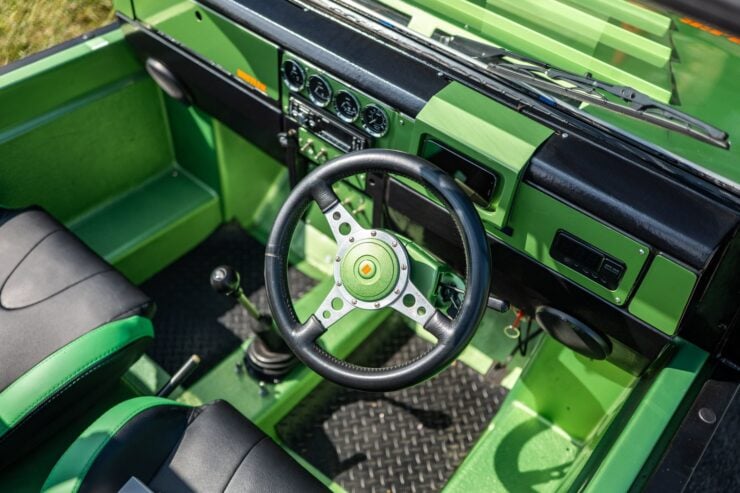


This Hustler was built in 1988 by engineering students at Cranfield University in the UK. It was later bought and restored by an (aforementioned) Aston Martin apprentice who modified the design to resemble the Hustler Sport model.
It’s now being offered for sale out of Milton Keynes in the United Kingdom on Car & Classic. If you’d like to read more about it or register to bid you can visit the listing here.
Images courtesy of Car & Classic


